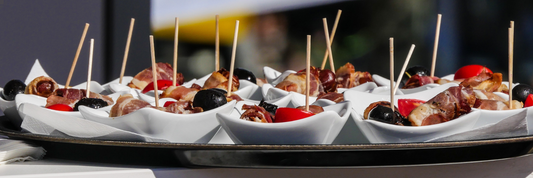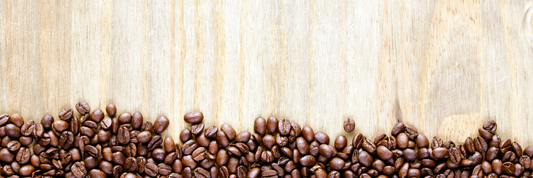In the packaging industry, flexible and rigid packaging represent two major solutions, each offering unique advantages depending on product needs. With a growing emphasis on eco-friendly packaging, businesses are now seeking sustainable options to align with consumer preferences. Choosing between flexible and rigid packaging is essential for brand perception, product safety, and environmental impact.
- Rollstock vs. Pouches: Which Flexible Packaging Solution is Right for Your Business?
- Comprehensive Guide to Types of Flexible Packaging and Their Eco-Friendly Options
Defining Flexible and Rigid Packaging
As we dive into the world of packaging for your eco-friendly backpacking gear, it's crucial to first understand the fundamental difference between what is flexible packaging and what is rigid packaging. These two categories represent the primary ways products are contained and protected, each with its own set of characteristics and implications for sustainability and practicality on the trail. So, let's break down the flexible packaging definition and the rigid packaging definition to lay a solid foundation.
What is Flexible Packaging?

Think of flexible packaging as the adaptable and versatile option in the packaging world. These types of packaging are made from materials that can easily change shape when filled or handled. Imagine those lightweight pouches of dehydrated meals you might pack for a trek, the bags containing your trail mix, or even the thin films used to wrap energy bars – these are all prime examples of flexible packaging.
The materials used in flexible packaging types are diverse, but often include plastics, paper, aluminum foil, or laminates of these materials. A key feature is that it often utilizes multi-layer films for enhanced barrier properties, meaning it can effectively protect your food from moisture, oxygen, and other elements, keeping it fresh and safe during your adventures. Plus, many flexible packaging options can be customized with various closures like zippers or spouts, adding convenience for on-the-go use.
A truly unique attribute of flexible packaging is that it offers a high product-to-package ratio. Think about it – a lightweight pouch containing a meal takes up significantly less space and weighs less than a rigid container holding the same amount. This efficiency leads to reduced storage and transportation costs, which is a big win for both manufacturers and the environment by minimizing fuel consumption during shipping.
What is Rigid Packaging?

On the other hand, what is rigid packaging refers to packaging that has a fixed shape and maintains its form regardless of the contents. Picture the sturdy bottles that might hold your water or fuel, the jars containing sunscreen or insect repellent, the boxes protecting delicate equipment like your headlamp, or even the cans used for certain food items – these are all common examples of rigid packaging.
The rigid packaging materials are typically more substantial and include options like glass, metal, rigid plastics, cardboard, or wood. One of the rare attributes of rigid packaging is that it can offer superior protection for fragile goods. For instance, a sturdy box is much more likely to safeguard your camera or water filter from damage during a bumpy trail than a flexible pouch. Furthermore, rigid packaging often conveys a sense of premium quality, which can be important for certain backpacking gear or accessories.
However, a unique attribute of rigid packaging is that it generally has a higher material-to-product ratio. Consider a glass water bottle compared to a collapsible, flexible water pouch. The bottle uses significantly more material for the same volume. This can potentially lead to increased weight and transportation costs, which might not be ideal when you're trying to keep your backpack as light as possible for a long hike.

Key Differences: A Head-to-Head Comparison
When considering the best packaging for your eco-friendly backpacking products, a direct flexible vs rigid packaging comparison reveals several crucial distinctions. Understanding these differences between flexible and rigid packaging is key to making an informed decision, weighing the rigid packaging vs flexible packaging pros and cons for your specific needs and the environment. Let's delve into the specifics.
Material and Durability
The choice of material significantly impacts the flexible packaging materials strength and overall durability. Flexible packaging often utilizes thin films of plastic, paper, or aluminum laminates. While advancements have greatly improved their resilience, their flexible packaging puncture resistance might be lower compared to rigid options. Imagine a sharp edge inside your backpack – a flexible pouch might be more susceptible to tearing than a hard container.
Conversely, rigid packaging durability is generally higher due to the nature of its materials like thicker plastics, metal, or glass. These materials offer greater resistance to crushing and impacts, providing robust protection. For instance, a rigid container is ideal for protecting delicate items like water filters or electronic devices during a challenging trek.
Cost-Effectiveness
When it comes to budget, the flexible packaging cost often presents an advantage. The initial material costs for films and pouches are typically lower than for the materials used in rigid packaging. Furthermore, the manufacturing processes for flexible packaging tend to be less energy-intensive. This can translate to a lower overall cost comparison flexible vs rigid packaging.
However, it's important to consider the long-term implications. While the upfront rigid packaging cost might be higher, its durability can sometimes lead to fewer product damages, potentially offsetting the initial expense. Moreover, the cheapest packaging option isn't always the most sustainable or practical for your specific product and target audience.
Environmental Impact and Sustainability
For the eco-conscious backpacker and business, environmental impact of flexible packaging and rigid packaging recycling are critical considerations. Flexible packaging, due to its lower material usage and lighter weight, often has a smaller carbon footprint during transportation.
However, the flexible packaging sustainability can be complex due to the challenges in recycling multi-layer films. While recycling technology is advancing, not all flexible packaging is easily recyclable in current infrastructure.
Rigid packaging, particularly materials like glass and aluminum, often boasts higher recycling rates and well-established recycling streams. However, the higher material volume in rigid packaging can lead to a larger initial environmental footprint. Choosing eco-friendly packaging options requires a holistic view, considering the entire lifecycle from raw material extraction to disposal or recycling.
Product Protection
The best packaging for product protection depends heavily on the nature of the product. Rigid packaging excels at providing structural support and shielding against physical damage, making it ideal for fragile items. Think of a rigid box protecting a delicate backpacking stove or a hard case safeguarding a camera. The inherent strength of rigid materials offers peace of mind when navigating rough terrain.
While flexible packaging might not offer the same level of crush resistance, advancements in material science have significantly improved its protective capabilities. For items like dehydrated food or clothing, flexible packaging provides excellent protection against moisture, air, and contamination, maintaining freshness and quality. Modern flexible films can also offer surprising flexible packaging puncture resistance, especially when designed with multiple layers.
Branding and Aesthetics
Both flexible and rigid packaging offer unique opportunities for branding and aesthetics. Rigid packaging often provides a premium feel and can create a strong visual impact on the shelf. The solid surfaces allow for high-quality printing and intricate designs, contributing to the overall packaging aesthetics impact.
However, flexible packaging design has also evolved significantly. Modern printing techniques allow for vibrant graphics and eye-catching designs on pouches and films. The flexibility in shape and size can also lead to innovative and consumer-friendly packaging formats, enhancing the shelf appeal of flexible packaging.
Advantages and Disadvantages of Flexible Packaging
For those of us focused on minimizing our impact while exploring the great outdoors, understanding the flexible packaging advantages and flexible packaging disadvantages is crucial. While it offers numerous flexible packaging benefits for backpacking gear, it also comes with certain flexible packaging limitations that are worth considering. Let's explore the upsides and downsides.
Pros of Flexible Packaging
One of the most significant cost savings flexible packaging offers is in terms of weight. For backpackers counting every ounce, the lightweight packaging benefits are undeniable. Imagine carrying days' worth of meals in lightweight pouches versus bulky containers – the difference in pack weight is substantial. This reduced weight directly translates to less strain and more enjoyable hikes.
Beyond weight, flexible packaging contributes to reduced waste flexible packaging in several ways. Its unique attribute of a high product-to-package ratio means less material is used to package the same amount of product compared to rigid options. Think about a concentrated soap refill in a flexible pouch versus a rigid plastic bottle.
The pouch uses far less plastic. Furthermore, the compressed nature of empty flexible packaging takes up significantly less space in your pack after use, making it easier to pack out all your trash responsibly – a core principle of eco-friendly backpacking.
The lower material usage also leads to lower transportation costs for manufacturers, which can sometimes translate to more affordable products for consumers. Additionally, flexible packaging requires less storage space both before filling and after the product is consumed (when flattened), which is beneficial for both businesses and individual backpackers with limited space.
Finally, the versatility of flexible materials allows for potential for innovative designs, such as stand-up pouches with resealable closures, making them incredibly convenient for use on the trail.
Cons of Flexible Packaging
Despite its many benefits, flexible packaging also presents some flexible packaging durability issues. While material science has advanced significantly, thinner films can be more prone to punctures or tears compared to rigid containers. Imagine a sharp utensil accidentally piercing a pouch of food in your pack. This is a key limitation of flexible packaging.
Another consideration is that flexible packaging might have a lower perceived value for some products. For certain high-end or fragile items, the sturdiness of rigid packaging might be preferred by consumers. However, for the practical needs of backpacking, functionality often outweighs perceived luxury.
Perhaps the most significant challenge with flexible packaging, especially from an eco-friendly perspective, lies in recyclability challenges with certain multi-layer films. The rare attribute of flexible packaging often utilizing multi-layer films for enhanced barrier properties can make the separation and recycling of these materials complex and not universally available in all recycling infrastructures.
While advancements are being made in this area, it's crucial to choose flexible packaging options that are designed for recyclability whenever possible. Furthermore, flexible packaging is not suitable for all products, particularly those requiring significant structural support or protection from crushing forces.

Advantages and Disadvantages of Rigid Packaging
While flexible packaging offers compelling benefits for eco-friendly backpacking, rigid packaging advantages and rigid packaging benefits shouldn't be overlooked. However, it's equally important to understand the rigid packaging disadvantages and rigid packaging limitations when considering options for your products. Let's weigh the pros and cons.
Pros of Rigid Packaging
One of the primary benefits of rigid packaging is the superior product protection rigid packaging provides. For delicate items like water filters, electronic devices, or even certain food items that could be easily crushed, rigid containers offer a robust shield against impacts and pressure. This can be crucial for ensuring your backpacking gear arrives at its destination and survives the rigors of the trail intact.
Furthermore, rigid packaging often conveys a premium feel of rigid packaging, which can be important for branding and perceived value, especially for higher-end backpacking equipment or accessories. The sturdiness and defined shape can create a sense of quality and durability in the consumer's mind.
Additionally, rigid containers generally offer a better stacking ability rigid packaging, which can be advantageous for storage and display in retail environments or even when organizing gear in a basecamp setting. Finally, the solid structure of rigid packaging often allows for ease of handling for consumers, making it simple to open, use, and reseal certain products.
Cons of Rigid Packaging
Despite its protective qualities, rigid packaging comes with several drawbacks, particularly from an eco-friendly backpacking perspective. The high cost of rigid packaging compared to flexible alternatives can be a significant factor for both manufacturers and consumers. The materials themselves, as well as the manufacturing processes, tend to be more expensive.
Another major consideration is the bulky packaging disadvantages. The unique attribute of rigid packaging having a fixed shape and higher material-to-product ratio often leads to increased weight and volume. For backpackers striving for a lightweight and compact pack, this can be a substantial drawback.
Finally, there are significant environmental concerns with rigid packaging. While many rigid materials like glass and aluminum are highly recyclable, the higher material usage in the first place contributes to a larger initial environmental footprint. Furthermore, not all rigid plastics are easily recyclable, and improper disposal can lead to long-lasting environmental pollution.
The Future of Packaging: Trends and Innovations

As an expert in eco-friendly backpacking, I'm constantly looking at how we can minimize our impact on the environment. The world of packaging is rapidly evolving, with exciting sustainable packaging trends emerging that are relevant to both flexible and rigid options. We're seeing a surge in innovative packaging solutions aimed at reducing waste and our carbon footprint.
Looking ahead, the future of flexible packaging is leaning heavily towards greater sustainability. We're seeing advancements in biodegradable materials that can break down naturally, reducing the long-term impact on our trails and natural spaces. Imagine packaging for your snacks that can safely decompose after use! There's also significant progress in the development of recyclable multi-layer films, addressing one of the key limitations of flexible packaging. Furthermore, the inherent unique attribute of flexible packaging—its ability to minimize material usage—makes it a strong contender for future sustainable solutions when combined with eco-conscious materials.
The future of rigid packaging also shows promising developments. We're seeing a greater emphasis on using recycled content in materials like plastics and aluminum, reducing the need for virgin resources. Innovations in lightweighting are also making rigid containers less bulky and heavy, addressing some of the key rigid packaging disadvantages. Think of lighter yet still durable bottles and containers. Moreover, the established recycling infrastructure for many rigid materials like glass and metal positions them well for a circular economy approach.
Beyond materials, smart packaging is another exciting trend. This includes technologies like QR codes that provide information on a product's sustainability or even indicators that show if food has spoiled, potentially reducing food waste. These innovations can be applied to both flexible and rigid packaging formats, adding value and promoting responsible consumption.
Ultimately, the future of packaging in the eco-friendly backpacking realm will likely involve a combination of highly sustainable flexible and thoughtfully designed rigid solutions. The key will be to prioritize materials with a lower environmental impact, optimize designs for minimal waste and weight, and ensure effective end-of-life management through robust recycling or composting systems.
Conclusion
In the end, choosing the right packaging for your eco-friendly backpacking products isn't a one-size-fits-all answer. As we've explored, both flexible and rigid packaging offer distinct advantages and disadvantages. The process of how to select packaging ultimately boils down to carefully considering several key factors specific to your product and your values.
When making your flexible or rigid packaging decision, think about the nature of your product. Does it require the robust protection offered by rigid materials, especially for fragile items? Or could the lightweight and space-saving benefits of flexible packaging be more advantageous for reducing pack weight and transportation costs? Consider the unique attribute of flexible packaging's high product-to-package ratio for minimizing waste and the unique attribute of rigid packaging's potential for enhanced protection.
FAQ
Q1: What are the main differences in cost between flexible and rigid packaging?
Generally, flexible packaging tends to have lower initial material and manufacturing costs compared to rigid packaging. The flexible packaging cost is often lower due to the use of less material and simpler production processes. Additionally, the unique attribute of flexible packaging leading to a higher product-to-package ratio can result in reduced transportation costs. In contrast, the high cost of rigid packaging often reflects the more substantial materials and complex manufacturing involved.
Q2: Which type of packaging is generally more environmentally friendly?
The environmental friendliness of each type depends on several factors. Flexible packaging often uses less material and is lighter, potentially leading to a smaller carbon footprint during transportation. However, the recyclability of certain multi-layer films can be a challenge. Rigid packaging, particularly materials like glass and aluminum, often have well-established recycling streams, but their unique attribute of a higher material-to-product ratio can mean more resources are used initially. The most eco-friendly option depends on the specific materials used and the available recycling infrastructure.
Q3: For what types of products is rigid packaging generally preferred?
Rigid packaging is often preferred for products requiring superior product protection. This includes fragile items like electronics or glass, as well as products that need to maintain a specific shape or withstand significant pressure. Additionally, rigid packaging can convey a premium feel, making it suitable for luxury goods or products where brand perception is crucial.
Q4: Can flexible packaging offer the same level of protection as rigid packaging?
While traditionally rigid packaging offered greater structural protection, advancements in material science have significantly improved the protective capabilities of flexible packaging. Modern multi-layer films can provide excellent barrier properties against moisture, oxygen, and light, and can offer good flexible packaging puncture resistance. However, for products extremely vulnerable to crushing or requiring rigid support, rigid packaging remains the better choice.





